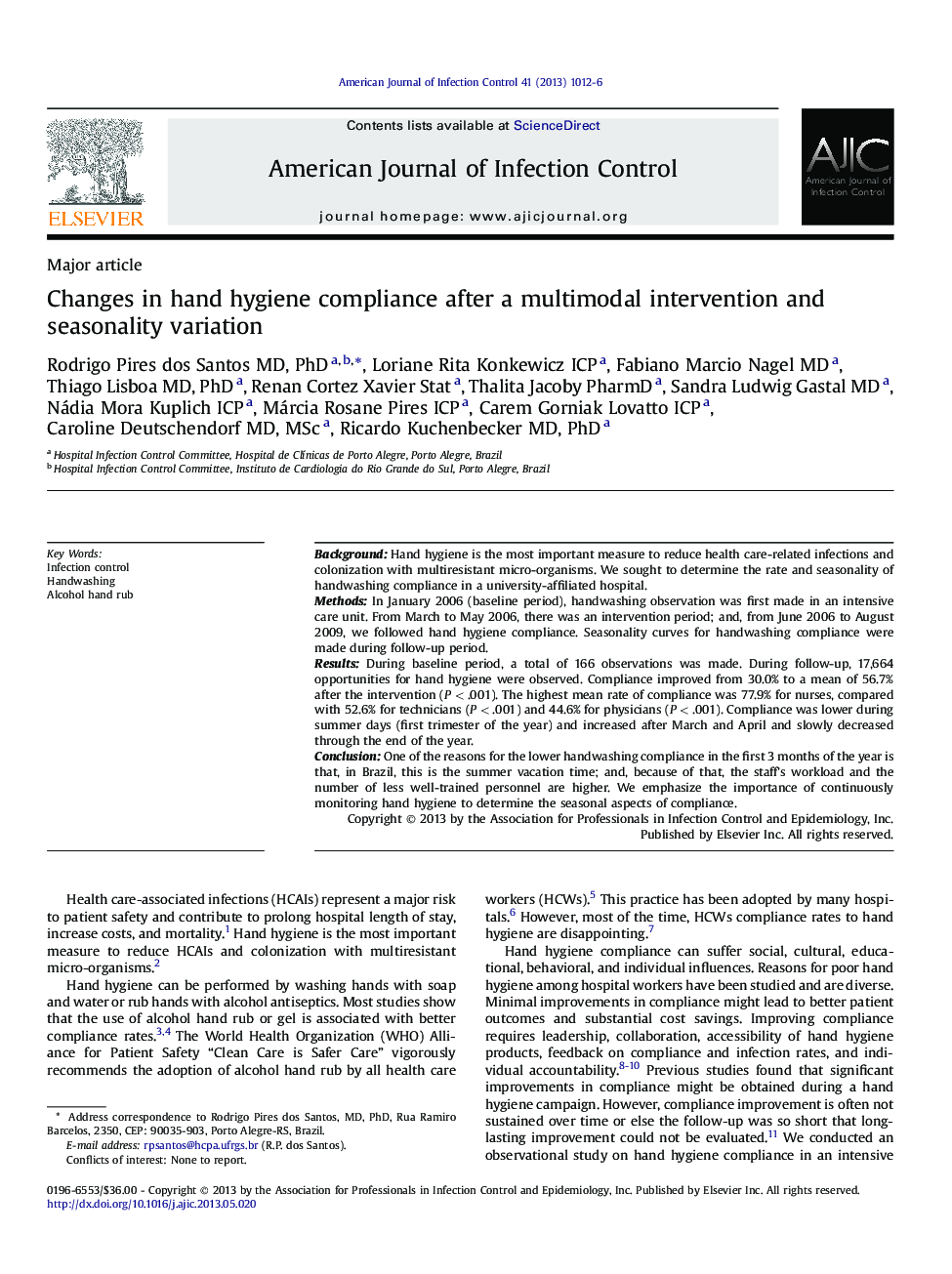| Article ID | Journal | Published Year | Pages | File Type |
|---|---|---|---|---|
| 2639546 | American Journal of Infection Control | 2013 | 5 Pages |
BackgroundHand hygiene is the most important measure to reduce health care-related infections and colonization with multiresistant micro-organisms. We sought to determine the rate and seasonality of handwashing compliance in a university-affiliated hospital.MethodsIn January 2006 (baseline period), handwashing observation was first made in an intensive care unit. From March to May 2006, there was an intervention period; and, from June 2006 to August 2009, we followed hand hygiene compliance. Seasonality curves for handwashing compliance were made during follow-up period.ResultsDuring baseline period, a total of 166 observations was made. During follow-up, 17,664 opportunities for hand hygiene were observed. Compliance improved from 30.0% to a mean of 56.7% after the intervention (P < .001). The highest mean rate of compliance was 77.9% for nurses, compared with 52.6% for technicians (P < .001) and 44.6% for physicians (P < .001). Compliance was lower during summer days (first trimester of the year) and increased after March and April and slowly decreased through the end of the year.ConclusionOne of the reasons for the lower handwashing compliance in the first 3 months of the year is that, in Brazil, this is the summer vacation time; and, because of that, the staff’s workload and the number of less well-trained personnel are higher. We emphasize the importance of continuously monitoring hand hygiene to determine the seasonal aspects of compliance.
